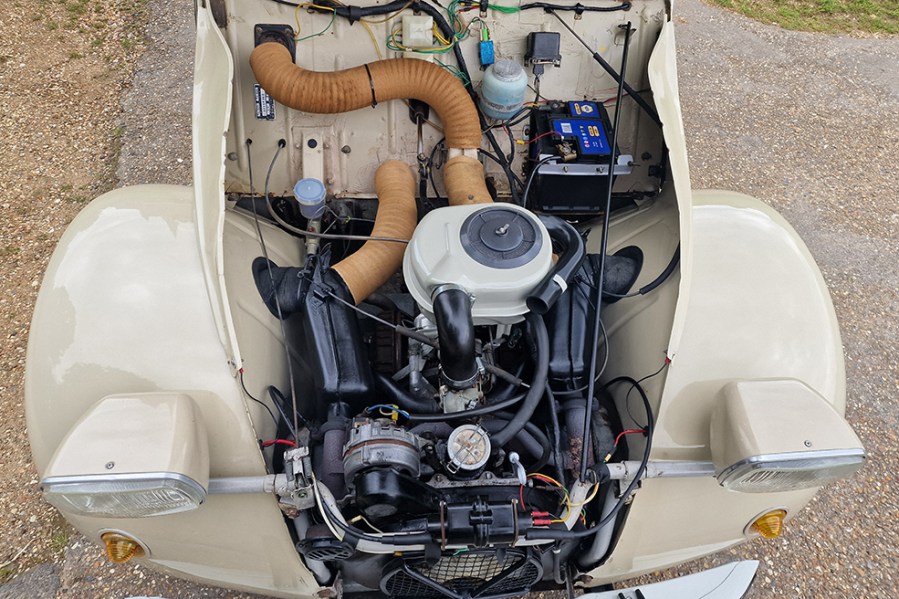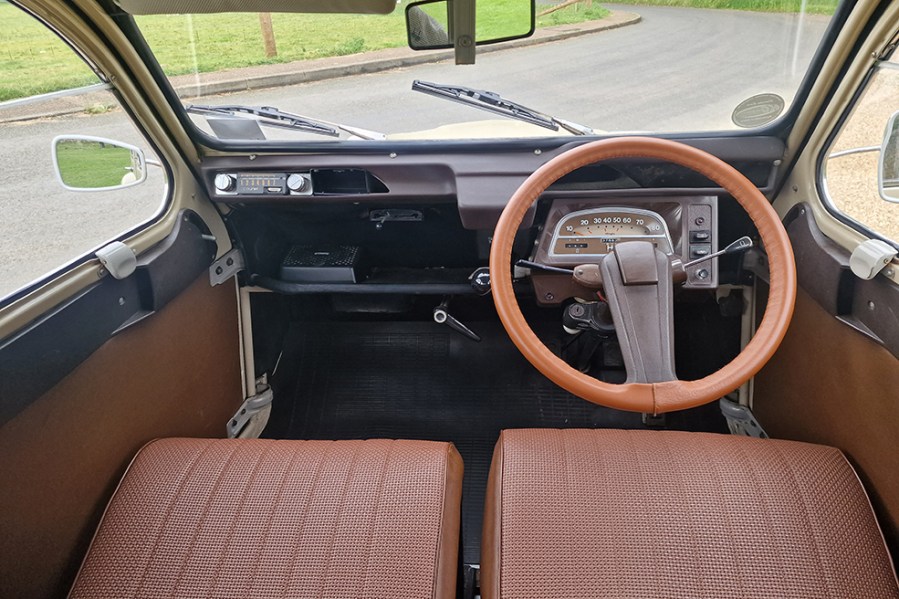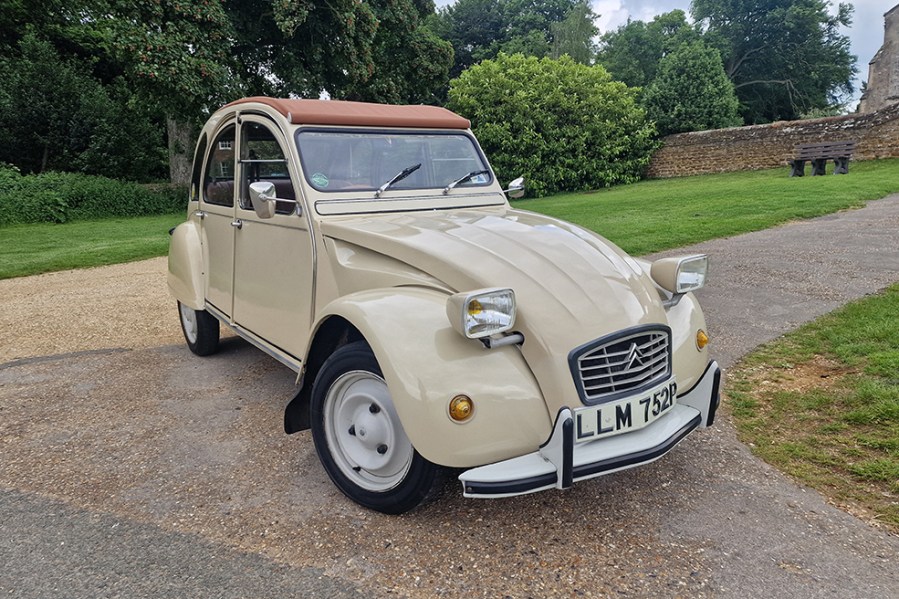We get behind the wheel of a rare mid-1970s example of the most famous small French Car – the Citroën 2CV6
Images: Sam Skelton With thanks to: Kim Cairns Classic Cars
Launched in 1948 at the Paris Motor Show, the 2CV had been the result of a pre-war initiative to develop a car for the ordinary French peasant – a car for which the primary competitor was the horse and cart. The Toute Petite Voiture would be simplified and rationalised into the 2CV – a car with no cooling system, no gaskets, no metal roof, and initially, not even a bootlid. At just 225,000 francs, there was a six-year waiting list almost from day one, with priority given to doctors, vets and farmers.
The 2CV later gave rise to a middle range for Citroën, starting with the Ami 6 – a more conventional and upmarket model based on 2CV components. There was also the Dyane – a Panhard-developed 2CV hatchback – and subsequently the more powerful Ami 8 and Ami Super models. There was even a UK-only variant, the GRP bodied Bijou, styled by Lotus Elite creator Peter Kirwan-Taylor and resembling a shrunken DS.
Austere it may have been, but the 2CV formula worked, and Citroën underwent a continual cycle of development. Later in life, a number of special editions ensured the model was kept fresh until production ceased in 1990 – when it simply became too expensive to build. French production had stopped in 1988, the final cars being built in Portugal.
Unchanged in concept for over 40 years and providing basic transport to over five million families and businesses, the 2CV still represents the most basic and simple iteration of what a motor car can be. Capable of seating four six-footers in hats while keeping eggs intact on the roughest of surfaces, simple enough to be maintained by a shepherdess, and lacking in so many of those aspects of the internal combustion engine that can cause failure, it is the perfect example of minimalism in design.

Even if you spend your days driving the fastest and most luxurious cars available, there is a joy to be found in a Deux Chevaux. And this mid-1970s 2CV6, offered by Kim Cairns Classic Cars at time of writing, is one of the nicest we’ve come across.
The 37,900 miles showing on test don’t tell the whole story, though they give a very good idea as to the condition of the car. The whole story is told by the four binders full of information – MoTs dating back to the 1970s and bills going back equally far.
In the early 2000s it had new floors and a new bulkhead, it’s also had new wings all round and an SLC galvanised chassis – the best type – fitted by Ken Hanna. It’s got a canvas hood, and the expensive type too; most 2CVs have plastic hoods which split over time.
Its previous owner was a known 2CV enthusiast and collector having had over 50 examples, and aware of the rarity of original 1970s examples he set about ensuring this one was as close to concours as it could be. It’s not a perfect car, but then, a perfect 2CV feels wrong; like a Land Rover they need to be used and bear the marks.

There is some very minor creasing to the bonnet – but all 2CVs do this, we think as a result of the flexibility of the panel when open. There’s also a little wear to the paint on the bonnet, as if polish has worn through to an earlier coat. But none of this detracts from the car in any way, and we like its honesty.
Under the bonnet, it’s perfect – and likewise in the boot. This is still a 2CV6 that you could conceivably enter into a show and expect to come away with a prize. The only thing we didn’t check was the period radio, but we see no reason to assume it won’t be in as good a condition as the rest of the car.
From a cold start, it doesn’t even need any choke to burst into life, and it idles nicely too. That rather sets the tone – it’s difficult to write about an example that is excellent in every way without sounding repetitive, but this car pulls cleanly, accelerates as well as you can expect of a 2CV, changes gear nicely with a good clutch, corners well and stops well. It’s noisy and slow, but it’s a 2CV and frankly that’s to be expected. By 2CV standards it’s tight and quiet, and it makes you feel good.
There is one element which we find jarring, and that’s the leather cover to the steering wheel rim which is non-standard. While we didn’t take it off to verify the condition of the wheel underneath, the condition of the car suggests that it is good. These wheels are known for attracting UV damage, and while we might not like the leather covering, the fact is that it’s a practical and sensible addition in order to preserve what is a very original car.

Citroën 2CV6: our verdict
You won’t buy this car to win races. But while those miles don’t pass quickly, they pass with almost unrivalled joy. And it’s an especially rare type of 2CV these days; there are many of the 1980s special editions left as these were collectible from day one.
Likewise, the value in early cars means that they’ve always been worth restoring. But standard and basic 1970s examples like this 2CV6 – reintroduced to Britain in the wake of the fuel crisis – are almost never seen these days. Even when you do come across one, it won’t be in the same sort of condition as this example.
If you want a 2CV that will turn heads even at a Citroën event, buy this one.


















